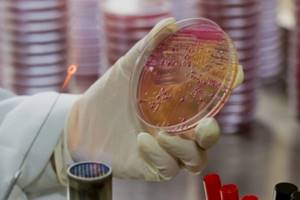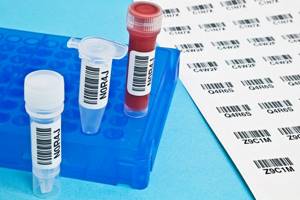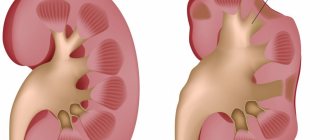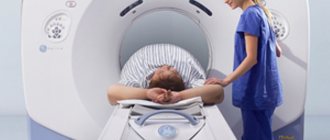Detailed description of the study
A urine culture is a test that detects bacteria in the urine that cause a urinary tract infection (UTI). Opportunistic intestinal microorganisms, which often cause UTIs, can enter the urinary tract from the nearby anus. These bacteria include E.coli, Streptococcus spp., Haemophilusinfluenza, Klebsiellaspp., Staphylococcus spp., Pseudomonasaeruginosa, Citrobacter spp. and others. The infection has an ascending course, pathogens from the urethra enter the bladder and ureters, then, if the course of the UTI is unfavorable, to the kidneys.
UTIs are more common in women than in men. This is due to the fact that a woman’s urethra is shorter and much closer to the anus compared to a man’s. Thus, bacteria from the intestines enter the female urinary tract much more easily.
Pregnancy is another predisposing factor for the development of UTIs due to hormonal and anatomical changes occurring in the genitourinary system. Urinary tract inflammation is often asymptomatic, but can increase the risk of premature birth.
In older adults, the risk of developing a UTI increases significantly if a catheter is inserted into the urethra during an examination or hospitalization. UTI is one of the most common hospital-acquired infections.
The most common symptoms of a UTI are:
- Pain and discomfort in the lower back and lower abdomen
- Pain when urinating
- Increased body temperature, chills
- Frequent urge to urinate
- Difficulty in urine flow
- Nausea, less often vomiting
According to current recommendations of urologists around the world, urine culture is the gold standard for testing to identify microorganisms that cause UTIs.
Bacteriological culture of urine for flora
- Microbiological (cultural) study for yeast-like fungi of the genus Candida (Candida) and others with determination of sensitivity to antifungal drugs
- Microbiological (cultural) study of aerobic and facultative anaerobic flora with determination of sensitivity to the main spectrum of antimicrobial drugs and bacteriophages
- Microbiological (cultural) study of aerobic and facultative anaerobic flora with determination of sensitivity to an expanded range of antimicrobial drugs
Bacteriological culture of urine (bacteriological culture of urine) is a type of bacteriological study in which microorganisms present in the urine are detected and identified, and their concentration is determined.
For this purpose, biological material (urine) is placed in a nutrient medium (agar, sugar broth) favorable for the growth and development of microbes. If there is no growth of microorganisms, the result is negative. If the growth of bacteria or, for example, fungi is still detected in a concentration at which infection may develop, then the result of urine culture is considered positive. The concentration of microorganisms (the number of microorganisms per unit volume of biomaterial) during bacterial culture of urine is determined in colony-forming units (CFU). Colony-forming unit (CFU) is a single living microbial cell (or group of cells) from which a visible colony of microorganisms grows.
If the urine culture results are positive, that is, the causative agent of the infection is identified, it is necessary to select an effective antibacterial drug to combat it. To do this, the sensitivity to antibiotics of isolated cultures of microorganisms is determined (antibioticogram). Determining antibiotic sensitivity is extremely important in order to prescribe effective treatment.
Bacteriological urine culture is a fairly common test with high sensitivity and specificity. This test is widely used during pregnancy. Urine culture is also indicated to determine the effectiveness of treatment for urinary tract infections.
The disadvantages of the method are the relative duration of the study (4-7 calendar days) and high requirements for collecting material. However, urine culture can provide information that other research methods cannot provide.
Indications for urine culture:
- urinary system infections,
- control of the treatment performed,
- clarification of the diagnosis in case of an atypical picture of the disease,
- relapsing course of the disease,
- pregnancy,
- diabetes,
- immunodeficiency,
- suspicion of resistant (resistant to antibacterial therapy) flora.
For urine culture, an average morning urine sample of 3-5 ml is taken, collected in a sterile plastic disposable container. A container for collecting urine for bacteriological culture should be obtained in advance from the CMD laboratory reception. Urine collection for urine culture testing is carried out after thorough toileting of the external genitalia without the use of antiseptics.
Biomaterial for urine testing is taken before the start of antibacterial therapy or in the intervals between courses of treatment, but not earlier than two weeks after its completion.
The collected urine must be delivered to the Laboratory as quickly as possible: at room temperature (+18+20°C) – within 1-2 hours; at +4+8°C (refrigerator) - 5-6 hours.
Decoding the results
Urine itself is sterile and does not contain any bacteria. If harmful microorganisms are detected in the biomaterial, doctors conclude that they entered the urine from the genitals. This result is interpreted as positive. But this does not at all mean that the patient has diseases of the urinary system.
If the analysis reveals a large number of pathogenic microorganisms (more than 10 thousand per 1 ml), a disease called bacteriuria is diagnosed. The main sign of this pathology is the predominance of one type of bacteria in the urine.
If several types of bacteria were detected simultaneously, it is concluded that the contamination of the biomaterial occurred due to an infection on the skin. Then the doctor recommends taking the test again to confirm or refute the result.
The following degrees of bacteriuria are distinguished (the value obtained as a result of the study is taken into account):
- 10-10-2 – incidental infection is observed during the collection of biomaterial (conditionally normal result);
- 103 – indicates the absence of an inflammatory process in the body (normal);
- 104 – the result is in doubt, a repeat test is required;
- 105 – inflammation is present in the body.
Drugs for the treatment of cystitis
The peculiarity of the prescribed drugs for cystitis is that they are from different groups of antibiotics.
They have a common characteristic - a high concentration of antibiotic in the urine and a pronounced effect on E. coli.
From the ciprofloxacin group, they are treated with ciprofloxacin itself, cyprinol, ciprobay and other similar drugs.
They are also treated with ofloxacins - ofloxacin, zanocin, tarivid and other similar drugs.
Preparations with norfloxacin, such as nolicin, norbactin and normax.
There are other drugs from other groups.
But antibiotic therapy must be carried out as prescribed and under the supervision of a doctor.
Pain with cystitis
Almost every woman has had cystitis at least once in her life.
Moreover, painful sensations are very characteristic of it.
When emptying the bladder, the patient experiences acute pain - as if she is being stabbed with a thousand sharp objects.
If urination occurs, a burning sensation is felt, a false urge to empty the bladder continues, discomfort in the lower third of the abdomen and pelvis.
Cystitis often occurs together with urethritis, since the urethra and bladder are affected.
Diagnostics
There are several diagnostic methods for detecting bacteriuria. Proper preparation required before taking the test. In a specific clinical situation, the attending physician selects a specific study or a combination of methods:
- Microscopy.
Detection of bacteria by direct microscopic examination of centrifuged urine sediment. The method has extremely low diagnostic value. Microscopy may reveal signs of improper patient preparation - an abundance of diverse flora, a large amount of mucus and squamous epithelial cells. - Nitrite test.
During their life, bacteria that colonize the genitourinary tract convert nitrates from food into nitrites. Urine test strips have a special reagent zone that stains in the presence of nitrites. The test may be false negative if there are no nitrates in the patient’s diet, infection with bacteria that do not form nitrites (streptococci), or high levels of ascorbic acid in the urine. - Bacteriological culture.
This method is considered the gold standard for diagnosing bacteriuria. In the laboratory, a urine sample is cultured with culture media for specific bacteria. To confirm the diagnosis of asymptomatic bacteriuria, at least 2 cultures are required with an interval of 24 hours. The disadvantage of this method is the long waiting time for results - 2 or 3 days. - Flow cytometry.
Some modern automatic analyzers are capable of performing a detailed assessment of the cellular composition of a urine sample, including counting the number of bacteria.
Microscopy, nitrite test and flow cytometry are considered indicative methods for detecting bacteriuria, and microbiological culture is a confirmatory method. An important point is that in the case of bacterial growth reaching a clinically significant titer (above 10x5 colony-forming units per ml) during culture, sensitivity to antibacterial drugs must be determined. This is necessary for selecting therapy.
In addition to detecting bacteriuria, additional studies are required to differentiate the etiology of its occurrence:
- Analysis of urine.
TAM indicators help to determine the cause of bacteriuria. For example, the presence of leukocytes and an alkaline urine reaction highly likely excludes asymptomatic bacteriuria; an increase in protein content and red blood cells may indicate pyelonephritis. Detection of transitional epithelial cells by microscopy indicates damage to the bladder or urethra, and renal epithelium and a large number of cylinders indicate damage to the kidneys. - Ultrasound.
Ultrasound of the kidneys with pyelonephritis shows an expansion of the ventricular region, and abnormalities in the structure of the ureters can also be detected. With prostatitis, ultrasound of the prostate gland reveals an increase in its size and a decrease in echogenicity. With epididymitis, ultrasound of the testicle visualizes enlargement of the epididymis and diffuse changes. - Examination by a gynecologist.
If you suspect a gynecological disease, you need to consult a gynecologist who examines the genital organs, bimanual vaginal examination, and colposcopy. If necessary, a smear is taken from the mucous membranes or secretions for cultural examination. - Examination by a urologist.
Similarly, if indicated, men are scheduled to consult a urologist for a digital rectal examination, collection of prostatic fluid or ejaculate.

Culture of urine on nutrient media
Classification
Depending on the number of bacteria, some experts conditionally distinguish minor and severe bacteriuria. In clinical practice, only one classification is used to determine the patient’s treatment tactics:
- Asymptomatic bacteriuria.
It is characterized by the detection of bacteria in the urine in the absence of any complaints and other laboratory signs of urinary system infections (leukocyturia, etc.) in the patient. - Symptomatic bacteriuria.
A combination of clinical symptoms and identification of bacteria in a urine sample.
Contagiousness of cystitis
Most often, as we have already discussed, infectious cystitis occurs from E. coli.
And such opportunistic microflora is not infectious to other people.
Sexual transmission of infection is not typical for cystitis.
But having unprotected sex can lead to cystitis or its relapse.
Exacerbations of cystitis are always accompanied by severe pain in the lower third of the abdomen, which serves as an obstacle to sex.
You cannot become infected with any form of cystitis directly from a person.
But by following certain rules of conduct in sexual life, you can avoid the causes that lead to cystitis.
It is necessary to be tested for STIs twice a year.

Regular sex and normal sexual activity increase your chances of not getting cystitis more than long periods of abstinence.
Timely treatment begins with a complete cure for cystitis.
And correct and regular adherence to preventive measures will help avoid recurrent cystitis.
Correction
If bacteriuria is detected, you must consult a doctor for correction. Asymptomatic bacteriuria in the vast majority of cases does not require treatment. The exceptions are pregnant women, patients with installed urinary catheters, patients with poorly controlled diabetes mellitus - these patients are indicated for antibacterial therapy. For symptomatic bacteriuria, the following treatment is recommended:
- Pyelonephritis
. First-line drugs are pecinillins (amoxicillin/quavulanate), cephalosporins (cefixime, ceftibuten). For strains that are resistant to them, they resort to fluoroquinolones (levofloxacin, ciprofloxacin), new generation cephalosporins (cefepime). - Cystitis
. Fosfomycin trometamol or nitrofurans (nitrofurantoin, furazolidone) are used. For recurrent cystitis, medications based on cranberry extract, D-mannose, and herbal remedies (canephron) are prescribed. Also, for relapses, some experts recommend lyophilisate of bacterial lysate of Escherichia coli. - Genital tract infections
. For prostatitis and epididymitis, fluoroquinolones and macrolides (azithromycin) are used; for vulvovaginitis, cervicitis, instillations of antiseptic solutions and antibiotics active against anaerobic flora (metronidazole, clindamycin) are used.
Reasons for false indicators
Occasionally, when deciphering a urine culture, the patient receives a false positive result. This situation may arise due to the following reasons:
- incorrect collection of biological material;
- lack of proper experience of a specialist examining urine;
- the patient has been taking antibacterial and diuretic medications for a long time;
- personal hygiene rules are poorly observed before urine collection;
- difficulty urinating.
But the probability of a false positive result is quite low, and if you follow all the rules for preparing for the procedure, the result will be accurate.
In general, urine culture is a fairly effective procedure, responsible not only for the detection of harmful microorganisms, but also for the selection of therapy, since susceptibility to a particular drug is established. The price of this procedure starts from 340 rubles.
Uro-hyal for cystitis
Now we will talk a little about the new Russian drug Uro-hyal, which has proven its effectiveness in treating cystitis.

This solution contains hyaluronic acid, which lines the mucous membrane of the bladder with an elastic coating.
And you can treat cystitis without fear of damaging this wall during therapeutic action.
Uro-hyal is indicated for chronic recurrent cystitis, radiation and interstitial cystitis.
Forecast
Bacteriuria in itself cannot serve as a predictor of clinical outcome. The prognosis is directly determined by the underlying disease - the most favorable for asymptomatic bacteriuria, cystitis, urethritis. Frequently occurring pyelonephritis contributes to the formation of kidney stones. With severe bilateral pyelonephritis, serious life-threatening complications can develop - carbuncle, kidney abscess, hydronephrosis. An extremely rare and most fatal consequence of pyelonephritis is urosepsis.
Which doctor treats cystitis?
Inflammation of the bladder should be dealt with by urologists.
But women with cystitis often turn to a gynecologist for help, showing some ignorance.
After all, the bladder, like the urethra, belongs to the urinary system, and not to the reproductive system.
And the gynecologist may not be sufficiently informed about all the intricacies of cystitis and prescribe insufficient treatment.
As a result, complications may arise that could have been avoided if the attending physician was a urologist.
This must always be remembered and treated correctly.








